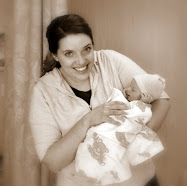Some hundreds of years ago, Colonial Americans thought it fit for a woman who had just given birth to keep to her bed for three or four or more weeks. For the length of the “lying in” period, as it was called, the new mother would rest, regain her strength, and bond with the baby as her womanly attendants kept up the household. Several of these ladies would be relatives, and others not; none were paid, and all expected to be similarly cared for following their own deliveries. Then, in the 19th century, the last free land was settled, and everyone retired to her own room. As Richard and Dorothy Wertz write in
Lying-In: A History of Childbirth in America, “The era of social childbirth, with its volunteer woman-to-woman help, passed with the disappearance of the American frontier.” The “lie-in” wasn’t adapted or modified. And it certainly wasn’t replaced with anything.
This country is one of the only utterly lacking in a culture of postpartum care. Some version of the lie-in is still prevalent all over Asia, Africa, the Middle East, and particular parts of Europe; in these places, where women have found the postpartum regimens of their own mothers and grandmothers slightly outdated, they’ve revised them. The U.S. seems only to understand pregnancy as a distinct and fragile state. For the expectant, we issue reams of proscriptions—more than can reasonably be followed. We tell them what to eat and what not to eat. We ask that they visit the doctor regularly and that they not do any strenuous activity. We give them our seats on the bus. Finally, once they’ve actually undergone the physical trauma of it, their bodies thoroughly depleted, we beckon them most immediately to rejoin the rest of us. One New York mother summed up her recent postpartum experience this way: “You’re not hemorrhaging? OK, peace, see you later.”
The Chinese traditionally adhere to 30 days of restful confinement—another week for a C-section—during which time moms are meant to consume lactation-inducing soups and herbal tonics and abstain from sex and cold water. In Mexico, the ritualized interlude, or thecuarentena, goes for 40 days, or long enough for the womb to return to its place. Balinese women are not allowed to enter the kitchen until the baby’s cord stump has fallen. Dutch maternity nurses make postpartum visits every day for the eight days after childbirth, and in France, as elsewhere, new moms spend nearly a week in hospital. Always, the mothers are educated as they convalesce; they’re taught to breast-feed, to manage baby rashes and bath time and sore nipples. Rarely are they first to respond to the infant’s shrieking. In 2011 I visited a luxury postpartum center in Taipei, where women of means (and who would rather not call on their mothers-in-law, as is custom) spend a month in recovery. When I asked Tsai Ya-hui, who had given birth to her first child three weeks earlier, what she did all day in her high-end suite, she answered: “Internet and sleep. That’s about it.” She looked more refreshed than I did.
There are elements of these postpartum practices (the consumption of foods rich in iron) that are common-sensical, and there are others (tightly wrapping the belly with a postnatal girdle; consuming distilled rice wine in place of water; extremely limited exposure to the sun in the first month), the usefulness and safety of which are debated by the medical community. But the thing to focus on here is the idea of a culturally recognized and accepted postpartum rest period. With these rituals comes an acknowledgment, familial and federal, that the woman needs relief more at this time than at any other—especially if she has a career to return to—and that it takes weeks, sometimes months, to properly heal from childbirth. An acknowledgement that overexertion after labor could lead to depression, infection, increased uterine bleeding, or prolapse. An acknowledgment that the postpartum stretch shouldn’t feel, as it did for so many of the American women who took part in my informal survey, like one long sleepless night.
“A culturally accepted postpartum period sends a powerful message that’s not being sent in this country,” said Dr. Margaret Howard, the director of the Day Hospital for Postpartum Depression in Providence, Rhode Island. “American mothers internalize the prevailing attitude—‘I should be able to handle this myself; women have babies every day’—and if they’re not up and functioning, they feel like there’s something wrong with them.” A colleague of Howard’s, the daughter of a pediatrician, brought her prepregnancy jeans to the delivery room, expecting to slip into them once the baby was out.
I spent part of an afternoon with some new mothers in Park Slope, an affluent Brooklyn neighborhood that is frequently and teasingly associated with over-the-top urban parenting. As a group, they’d received probably the best postpartum care that this country has to offer, which they detailed over the squeals and sighs of their nursing infants. Sophia Sotto had hired a postpartum doula, but didn’t feel comfortable “asking her to do the dishes in the sink.” She remembered: “I still couldn’t manage when to shower, when to eat.” Sarah Hake had an episiotomy and still, like every woman in America, was asked to come in for a 15-minute checkup six weeks after leaving the delivery room. “Six weeks is too late,” she said. The rest murmured their agreement. All had cooked; all had cleaned. Asked Emily Lillywhite, “If you don’t get up and do it, who will?” One woman had taken an especially long walk two days after delivering, because she wanted to “feel normal again.” Most had been afraid to survey the wreck between their legs, and those who did look hadn’t been able to tell if they were healing well or not. “Google became my very good friend,” said Ruth Margolis. “Yes,” Sotto broke in. “Your postpartum support is the Internet.”


